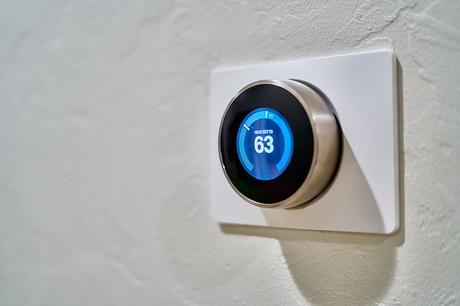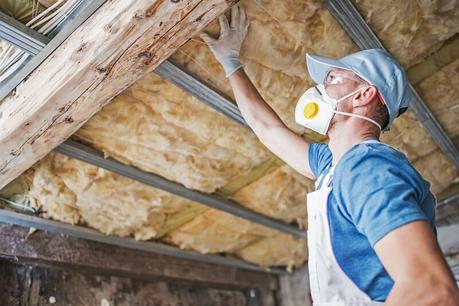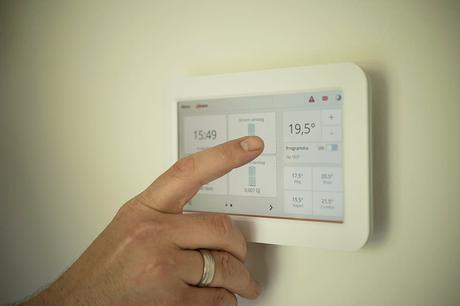
Can you save money by keeping the heating on?
Afternoon tea. Going down the pub. Sunday roast. All brilliant British pastimes depending on who you ask. But saving money on energy bills could count as a left-field entry to that list as well. The volume of people we come across asking if it is cheaper to leave the heating on all day suggests as much!
So we thought we’d take a deep dive into this common query, investigating the best means for you to save cash on your heating costs.

The most energy-efficient way to heat your home
At the base of it, the argument for leaving heating on all day has a simple origin. It stems from a belief that extra energy will be required to return the space to a comfortable temperature once the heating has been turned off.
The theory is that there is little point spending valuable time heating up your home only to allow it to lose heat and cool down again. Plus, many simply hate waiting for their heating system to boot up properly, and start infiltrating warmth throughout the house.
That said, by leaving your heating on for 24 hours, seven days a week, you’re obviously bound to expend more energy. You can guarantee there’ll be heat lost due to the contrast between the temperature outside the home, and the temperature level you want to maintain within the property.
Therefore, if you insist on leaving the heating on constantly, your heating system will be working overtime just to retain your preferred indoor temperature. The more heat you lose, the more energy you’ll need to keep the inside area warm – hardly conducive to lower heating bills!
A much more effective move in the battle to lower energy costs is to ensure that your home has proper insulation. Double-glazed windows, draught-proof doors and dynamic loft insulation are all worthy of consideration to save you money in the long run.
The most energy-efficient way to heat your home is to programme your heating system so that it switches on only when required most. Modern heating developments have only served to make this process more streamlined, and better tailored to the exact needs of the homeowner.
For instance, contemporary thermostat models will allow different temperatures to be set at different times, with alternate programming also available for weekends.
By using a timed boiler and thermostat in accompaniment with radiator temperature controls, you’re adopting the most energy-efficient method to heating your home possible.

Testing the theory
Don’t just take our word for it. You can put our theory to the test if your home is already set up with good quality insulation.
Try out the timed method and then experiment by having your heating system switched on for 24 hours at a time. You can ascertain whether it is cheaper to leave the heating on constantly, or whether you’ll enjoy lower heating costs by programming the system to turn on at specific intervals.
Trial the respective methods over a week-long period apiece. After that, you’ll have enough of a sample to denote which heating approach is the best one to adopt specific to your property.
You can collate the data you need by taking a reading from your energy meter at the start of the week, and then again at the end of it.
For the best and most reliable results, try to test each method when the outdoor conditions and temperature are similar. It should be quite clear which method is the most energy efficient for your home in its current state.

The importance of insulation
Regardless of the results of your heating approach experiment, one fail-safe means to enhance your home’s energy efficiency is to install proper insulation. Where to begin, though?
For homes with significant attic space, loft insulation offers the perfect vice for you to ‘dip your toe’ in the wide world of insulation. Though inexpensive and simple to fit, loft insulation can save you money aplenty over time.
You might have existing loft insulation that was fitted a while ago. If so, it might be worth performing a check on your insulation levels. Most often, older loft insulation will be at a lower level than is recommended today, so an insulation top up might be the order of the day.
But loft insulation isn’t the only highly effective method for making long-term savings on energy bills. You’ll have to make a significantly bigger initial outlay to source and fit wall insulation comparative to loft insulation.
Furthermore, you’ll likely need professional assistance to complete the installation. However, you’ll reap the financial rewards in due course.
There are two types of wall insulation to select between. If your house was built after the 1930s, it is likely to include cavity walls. These are made up of an inner and outer wall, with cavity wall insulation filling the gap between each.

The process involves the drilling of small holes into the walls, with these gaps then padded out with insulation material.
The insulation of solid walls can be comparatively more troublesome and costly, but it is possible to achieve. We’d recommend seeking professional advice and assistance for this sort of project.
Meanwhile, there are more subtle adjustments you can make within your property to bolster its energy efficiency, even if you decide against going all in on insulation.
The simplest change you can make is to introduce draft proofing, which entails gap-filling around the edges of windows and doors. And for the very best results, you need to think outside the box somewhat, considering even obscure fittings and fixtures such as chimneys or letterboxes.
One huge advantage of draft proofing is its extremely low cost. Plus, the fact that you can complete the work yourself. Expanding foam is a popular draft proofing material, especially for windows, and will be readily available to buy online, or from any DIY store worth its salt.
Windows are another obvious point of heat loss, but in being so pose an easily rectifiable issue. Double-glazing is commonplace in modern homes, and is sure to assist in the prevention of heat loss.
Positioning your radiator beneath the window is another popular trick. And you can also curtail the amount of heat lost by shutting the curtains in colder times, and opening them up to allow in sunlight when it’s warmer outside.
To maximise the effect of your curtains, you can opt to add insulating covers to them to reflect extra heat.

So, is it cheaper to leave the heating on all day?
In conclusion, we’d file the notion that it’s cheaper to leave the heating on all day under ‘popular misconception’ as opposed to ‘outright myth’.
A well-insulated home that only uses the heating system at specified intervals (when required) offers the best means to preserve energy, and save on heating bills.
If your heating is switched on all day, you’re wasting a certain amount of energy for the entire day. Just how much depends on how well insulated your property is.
The better insulated your home is, the less heat it will require in more sporadic spells. As such, less energy is expended and lower energy bills ensue.
Ultimately then, the key to cost effective home heating isn’t to leave the system on all day every day. It will save you money in the long run to properly insulate your home, ensuring you won’t need to use as much energy to keep your home at a comfortable temperature.
It’s also a good idea to compare energy suppliers to find out if you can get more heat for your sheets. Run an energy comparison to see how much you could save.
Stay safe and happy heating.

